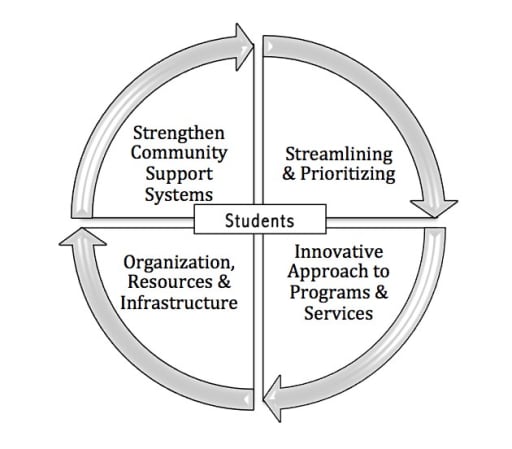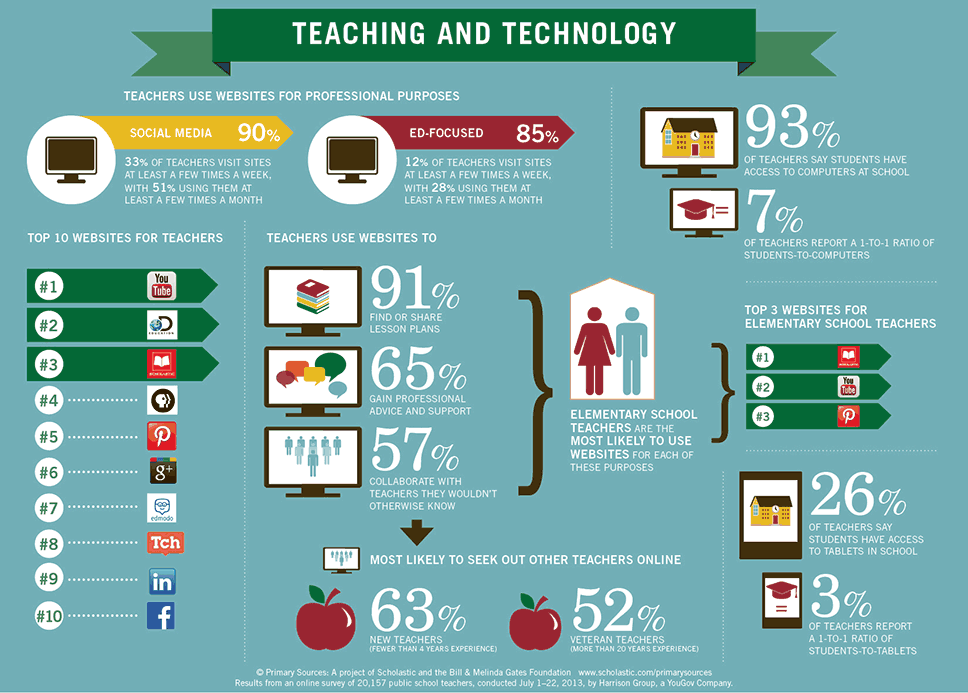Cool 4 Ed Open online library for education; Center for Open Educational Resources and Language Learning (University of Texas at Austin) Languages; Eliademy A free e-learning platform that allows anybody to create online courses. Federal Resources for Educational Excellence (FREE) retired in June 2015. Other government resources. Download Education technology stock photos. Affordable and search from millions of royalty free images, photos and vectors.
How does technology impact student learning? Some postsecondary educators view technology as a distraction in the classroom. Even if they don’t ban the use of mobile phones or social media during class, they may begrudgingly view technology as a little more than a necessary evil.
But rather than simply ‘tolerate’ it, instructors can harness the power of digital devices, apps and tools to increase engagement, encourage collaboration, spark innovation and enhance student learning.
In and of itself, educational technology doesn’t result in effective teaching and learning. It still requires a guide (the educator) and a purpose (related to the curriculum). And it does require some effort and strategies to integrate it effectively into your course material. But, if used with intention, technology can be transformed from a distraction to an effective teaching tool.
Here are a few answers to the question of how technology impacts student learning, and reasons why educators should make the most of technology inside—and outside—the classroom.
Technology affords better access to resources
With an Internet connection, we have access to information at our fingertips 24 hours a day. We can find almost anything online, in its most up-to-date version. For students, this means access to everything from research materials and educational apps to interactive edutainment and open resources from prestigious universities around the world. They may, however, need instruction on how to find credible resources and direction on providing proper attribution when they use them.
Students can also supplement their learning by connecting with online groups and virtual communities in real time, or by collaborating on group projects with tools such as wikis and cloud-based apps. And instructors can provide access to course material (and additional resources) by setting up portals through learning management systems or providing access to course-specific software for each learner. Blended learning — a mixture of classroom technology and face-to-face learning—is a popular way of organizing this.
Technology can improve student engagement
Education technology can make learning more interactive and collaborative—and this can help students better engage with course material. Rather than memorizing facts, they learn by doing. This could be as simple as taking an interactive quiz in class or participating in tech-enabled group discussions or as involved as playing educational games, practicing science experiments in a virtual lab or taking a virtual field trip.
But to make it truly engaging, it must be truly interactive. Doing math on a computer isn’t any different than doing math with a pencil and pad of paper. But using augmented reality to animate math challenges is a whole different ballgame. For some students, interactivity provides a better learning experience.
For teachers, the possibilities are endless: from using simulation tools to demonstrate how a hurricane develops, to using virtual reality to practice medical procedures. “As a growing number of medical schools bring virtual reality into the classroom, students are finding it an effective way to learn complex subject matter, such as anatomy, that’s often easier to understand with hands-on practice,” writes1 Chris Hayhurst for EdTech Magazine.

Technology can expand classroom boundaries
Thanks to technology, the classroom no longer has walls. The learning environment no longer has boundaries. And instruction can be provided by any number of subject matter experts—in addition to the person teaching the course.
“Students in a classroom in the rural U.S., for example, can learn about the Arctic by following the expedition of a team of scientists in the region, read scientists’ blog posting, view photos, e-mail questions to the scientists, and even talk live with the scientists via a videoconference. Students can share what they are learning with students in other classrooms in other states who are tracking the same expedition,” according to an article2 on technology in education by Purdue University.
Technology can encourage self-paced learning
In a traditional classroom, students who were struggling to learn new concepts would quickly fall behind their peers. With online assignments, however, students can advance at their own pace. Those who need more time or extra help can practice outside of class with guided exercises or additional coursework. So, too, can learners who want more of a challenge.
Thanks to the always-on nature of technology, students can access resources online whenever they need to, and instructors can see which students might need extra help. The exercise of self-paced learning also helps students learn digital literacy and 21st century skills, which will be useful when they enter the workforce.
Technology can promote innovative teaching techniques
Technology changes the way we access information, but also how we’re taught that information. The instructor becomes less of a ‘sage on stage’ and more of a ‘guide on the side.’ From accessing course materials online to watching video-recorded lectures, technology opens up the possibility for teaching innovation: from collaborative group work to flipped and hybrid classrooms. Instructors can also use classroom response systems to assess students’ understanding of course material and adjust the pace or content as needed in real time.
How does technology impact student learning? A summary
While technology is sometimes seen as a threat—and it does have its limits—integrating it into your teaching practice offers a new way for students to interact and engage with course material. Thanks to technology, education is no longer confined to the walls of your classroom. YouTube videos and social media don’t have to be a distraction; they can be part of your course material. The math is easy: it adds up to better learning outcomes.
References
- Hayhurst, C. (2017, February 15). Medical Students Practice Critical Skills on Digital Cadavers. Retrieved from https://edtechmagazine.com/higher/article/2017/02/medical-students-practice-critical-skills-digital-cadavers
- How Has Technology Changed Education? (2017, April 25). Retrieved from https://online.purdue.edu/ldt/learning-design-technology/resources/how-has-technology-changed-education
Tagged as:
Education TechnologyEducation Dive’s 2015 State of Education Technology survey polled more than 150 education leaders and teachers to learn how technology is being used in school districts across the country and what challenges to access they face. What they learned was that schools are underfunded and teachers are undertrained, facing environments where the technologies they use aren’t always reliable.
The survey’s results paint a picture of education in flux. As schools continue to transition toward more digital learning efforts, many educators are playing catch-up, learning how to incorporate these new tools within their curriculum.

Respondents were asked to name the three greatest challenges they face in providing access to education technology in their district. The following are the eight top issues they cited:
- 75.9% — Budget limits
- 53.9% — Inadequate professional training
- 41.4% — Teachers resistant to change
- 38.2% — Inadequate network infrastructure
- 30.9% — Unreliable device/software options
- 29.6% — No systems to use technology for curriculum
- 17.8% — Other
- 13.2% — District doesn't see immediate need for more technology
Image Resourcesslcsd Educational Technology Resources Examples
On the brighter side of things, the survey narrowed down the top three technologies that have impacted learning: notebooks (62.1 percent), interactive white boards (54.8 percent) and tablets (50 percent).
Other survey results showed that education leaders are beginning to grapple with the gap between available technology and educators' mastery of it. Slightly over 86 percent of respondents said they agreed that teachers in their district need more training in education technology. And nearly three-quarters of respondents (74.3 percent) selected professional development as the top priority for educators as they prepare for 2016.
The notion of professional development being in greater need was reinforced by a recent ConnectIT blog from CDW•G’s Eric Patnoudes.
Image Resourcesslcsd Educational Technology Resources Technology
“If there is one thing in this world I know to be true, it is that all of those technologies will have little to no impact on learning if teachers are not also provided with training and professional development to help them evolve from the conventional teaching practices of the 20th century,” writes Patnoudes.
The complete survey can be downloaded from Education Dive’s website.

